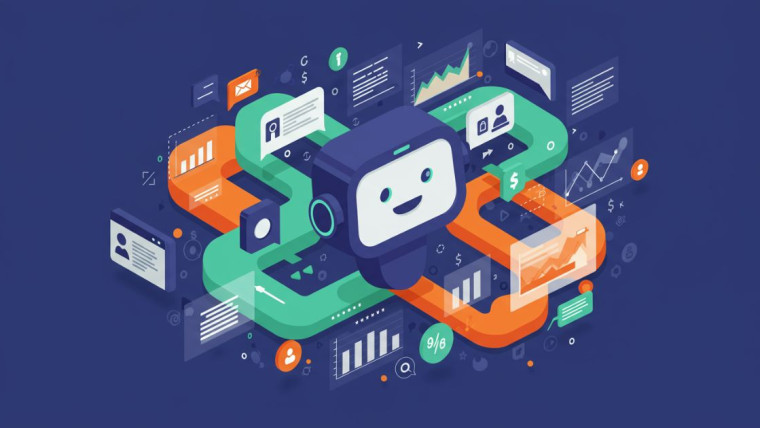Chatbot data privacy has become a critical concern as businesses increasingly rely on AI-driven customer service solutions. With over 80% of companies now using some form of chatbot technology, the stakes for proper data protection have never been higher. A single data breach can cost businesses an average of $4.45 million, making privacy compliance not just a legal requirement but a business imperative.
The rapid adoption of AI chatbots brings unprecedented convenience for customers and efficiency for businesses. However, this technology also creates new vulnerabilities in how personal information is collected, processed, and stored. Every conversation between a customer and your chatbot generates data that could include sensitive personal details, payment information, and behavioral patterns.
Understanding AI chatbot data privacy isn’t just about avoiding penalties. It’s about building customer trust, maintaining your brand reputation, and creating sustainable business practices. As privacy regulations become stricter worldwide, businesses that proactively address these concerns will have a significant competitive advantage.
Why Chatbot Data Privacy Matters More Than Ever
Privacy concerns around AI technology have intensified as consumers become more aware of how their data is being used. Recent surveys show that 86% of consumers are concerned about their data privacy, and 78% would stop using a service after a data breach.
Chatbots collect various types of sensitive information during interactions. This includes personal identifiers like names and email addresses, conversation logs that might reveal private concerns, and behavioral data that shows user preferences and habits. Unlike traditional data collection methods, chatbot interactions often feel conversational and informal, leading users to share more personal information than they might on a formal website form.

The AI-driven nature of modern chatbots adds another layer of complexity. Machine learning algorithms need access to conversation data to improve their responses. This creates tension between functionality and privacy, as more data typically leads to better performance but also increases privacy risks.
Data breaches in chatbot systems can be particularly damaging because they often expose intimate customer conversations. When customers chat with a bot about health issues, financial problems, or personal concerns, this information becomes extremely valuable to bad actors and incredibly damaging if exposed publicly.
Understanding Key Privacy Regulations
GDPR compliance remains the gold standard for data protection, even for businesses operating outside the European Union. The regulation requires explicit consent for data processing, gives users the right to access and delete their data, and mandates data protection by design in all systems.
Under GDPR, chatbot operators must clearly inform users about what data is being collected and how it will be used. This means providing transparent privacy notices before conversations begin and ensuring users can withdraw consent at any time. The regulation also requires that personal data be processed only for specified, explicit, and legitimate purposes.
The California Consumer Privacy Act (CCPA) and other regional privacy laws create additional compliance requirements. These regulations often have different notification requirements and user rights, making it essential for businesses to understand the specific laws that apply to their customer base.
Privacy regulations also require businesses to implement appropriate technical and organizational measures to protect personal data. For chatbots, this includes encryption of conversation data, secure data storage, and regular security audits.
Essential Data Protection Strategies for Chatbots
Chatbot encryption should be implemented at multiple levels to ensure comprehensive protection. End-to-end encryption protects data as it travels between users and your systems, while encryption at rest secures stored conversation logs and user profiles.
User data protection begins with data minimization principles. Collect only the information necessary for your chatbot to function effectively. Avoid storing sensitive information like social security numbers or payment details unless absolutely required for the service you’re providing.

Implement robust access controls that limit who can view chatbot conversation data. Use role-based permissions to ensure that only authorized personnel can access sensitive information, and maintain detailed logs of who accesses what data and when.
Regular data audits help identify potential vulnerabilities before they become problems. Review your data collection practices, storage systems, and third-party integrations to ensure they meet current privacy standards.
Data retention policies should specify how long conversation data will be stored and when it will be automatically deleted. Many privacy regulations require businesses to delete personal data when it’s no longer needed for its original purpose.
Building Trust Through Transparent Privacy Practices
Transparency builds customer confidence in your chatbot systems. Provide clear, easily accessible privacy notices that explain in plain language what data you collect, how you use it, and how long you keep it.
Give users meaningful control over their data. Implement features that allow customers to view their conversation history, download their data, or request deletion of their information. These self-service options reduce your administrative burden while empowering users.
Regular privacy impact assessments help identify potential issues before they affect customers. These assessments should evaluate new chatbot features, integrations with third-party services, and changes to data processing practices.
Consider implementing privacy-enhancing technologies like differential privacy or federated learning that allow your chatbot to improve while minimizing privacy risks. These advanced techniques can provide competitive advantages while demonstrating your commitment to user privacy.
Preparing for the Future of AI Privacy

The regulatory landscape for AI privacy continues to evolve rapidly. New laws are being proposed and implemented regularly, and existing regulations are being updated to address emerging technologies. Stay informed about regulatory changes that might affect your chatbot operations.
Privacy by design should be integrated into your chatbot development process from the beginning. This approach makes compliance easier and more cost-effective than trying to add privacy protections to existing systems.
Consider working with privacy professionals who understand both the technical aspects of chatbot systems and the legal requirements for data protection. This expertise can help you navigate complex compliance requirements while maintaining effective chatbot functionality.
Taking Action on Chatbot Privacy
Protecting user data in chatbot interactions isn’t just about compliance—it’s about building a sustainable, trustworthy business. Customers who trust your privacy practices are more likely to engage with your chatbots and share the information needed to provide excellent service.
Start by conducting a comprehensive audit of your current chatbot data practices. Identify what data you collect, how it’s protected, and whether your current practices meet regulatory requirements. Use this assessment to prioritize improvements and allocate resources effectively.
Invest in proper security infrastructure and staff training to ensure your privacy protections remain effective over time. Privacy protection is an ongoing process that requires continuous attention and improvement.








The Future of AI Chatbots in Customer Experience: What’s Next?
How Chatbot Analytics Evolved from Basic Metrics to AI-Powered Insights
How Chatbots Are Reshaping the Future of Online Education
AI Chatbots in Healthcare: Transforming Patient Support and Engagement